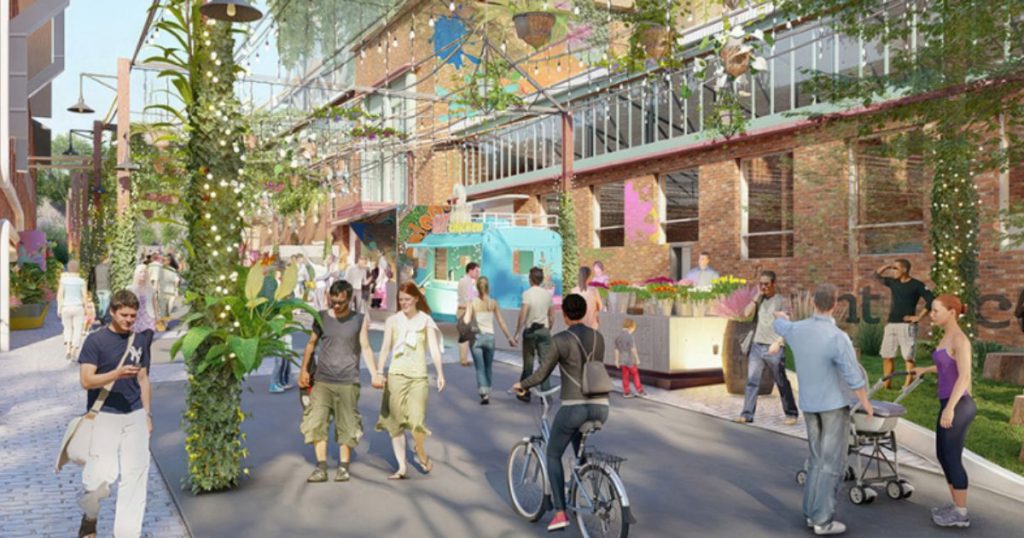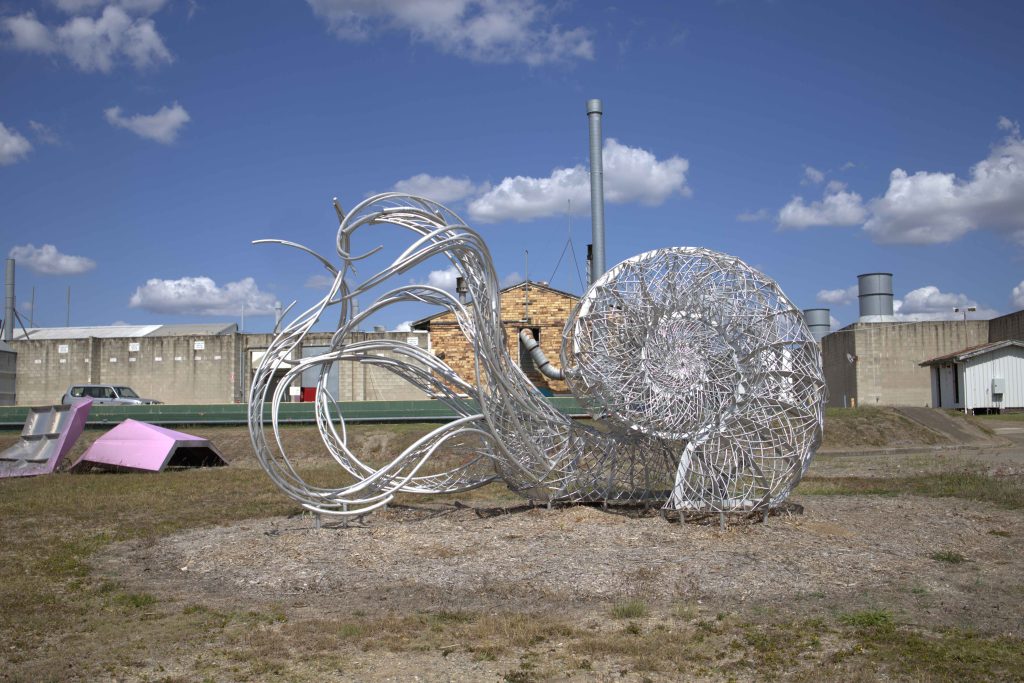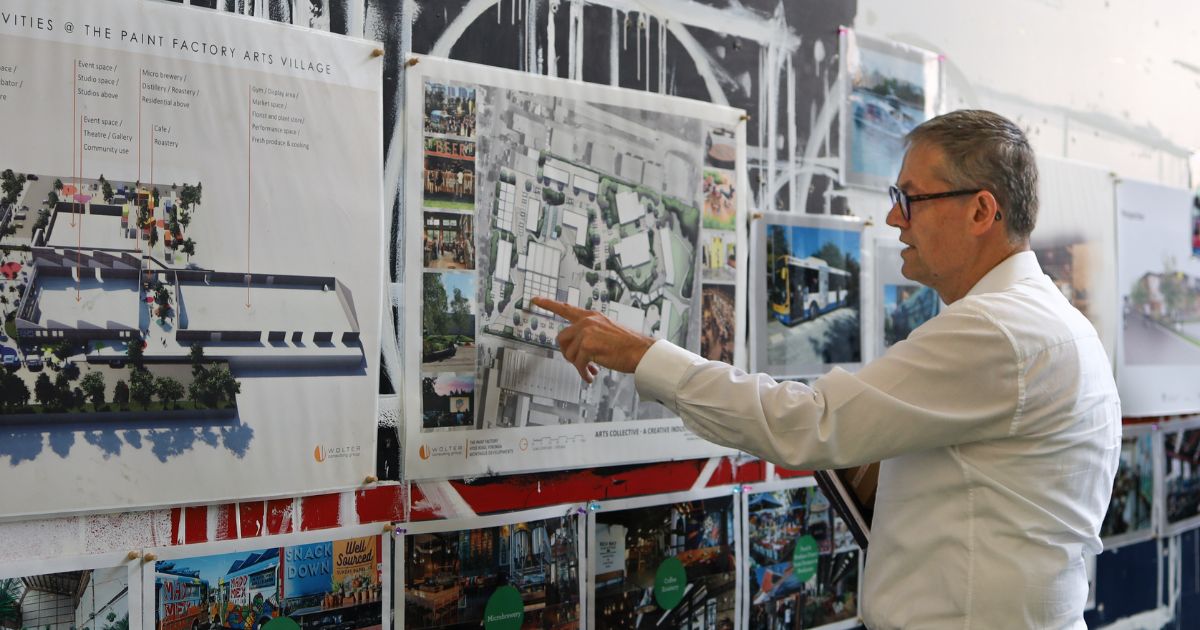A conversation with Paul Hey about his vision to transform an old Paint Factory site into a creative arts hub in Yeronga
We see a lot of developments locally, named to reflect our community or the purpose of the building they replaced. For example, in West End, the location of the Brisbane Symphony Orchestra building on the river was replaced by an apartment block now called Virtuoso. We also have The Glass Factory apartments on the site of a former industrial glazing factory, and in some sort of homage to West End’s reputation, we have Bohemia.
So, when a developer names a new project, The Paint Factory, local residents might understandably be a little cynical. But Paul Hey’s project seems to be the real deal.
South Brisbane-based developer Paul Hey says he is proud of plans to develop a fully integrated arts village at Yeronga, which he says will be Australia’s first.

Change of Use Application
The project plans to transform the old Taubmans Paint Factory at 115 Hyde Road, Yeronga, into an integrated, mixed-use development.
“This will shape the concept of ‘live, work and visit’ into an Australian-first precinct catering both to those who work in the creative industries and those keen to make a home in an arts-focused community”, Mr Hey says.
But before it can proceed, the developers need Council approval for a Change of Use application, which was lodged in August 2023.
The application seeks to change the site from low-impact industry to mixed-use zoning.
“Brisbane City Council announced recently in their strategic industrial plan that this land is now excess to the city’s needs for strategic industry and available for mixed use redevelopment, not residential development, but mixed use, which suits us in terms of our aims and vision,” Mr Hey said.
A change to mixed-use requires impact-accessible rezoning, and people have had opportunities to make submissions on the proposed changes.

Creative Hub
Mr Hey says the developer has a vision for embracing creativity and integrating it in a mixed-use setting with galleries, a theatre, a microbrewery, and affordable housing.
“This is a great location for housing, but we must have employment as well. We will provide more employment here on this site than has ever been provided in this setting.”
“We will have probably 200 workers working here: about 80 artists, art assistants, and employees of the microbrewery etc.”
“Housing would be provided for artists, students, and retired art collectors. We are focusing on the arts and creativity because those people want to be around creative people and they just enjoy being together.”
Mr Hey, who has long been associated with the social housing venture Common Ground in South Brisbane, says he would like to include social and affordable housing in the Paint Factory precinct.
“It’s important when considering social housing, to make sure from the start, that it will integrate as successfully as possible. And I think that from a master planning perspective, we’ve got a pretty good shot here,” Mr Hey said.
Many of the artists are already in place at the site. Among them, leading Australian artists including Richard Bell, Judy Watson, Vernon Ah Kee, Ryan Presley and Gordon Hookey.
“Their creative spaces at The Paint Factory have already taken its scope international.”
The developer has consulted widely with the artists that use the space.
“We also spent considerable time consulting with the local arts community across all mediums, as well as our neighbours and the extended national and international arts scene, to ensure the project is perfect for this space.”
“It was about hearing from them directly about what the site needs to be successful for years to come.”
Mr Hey says they have taken inspiration from projects such as the Brisbane Powerhouse, Carriageworks in Sydney, the Abbotsford Convent in Melbourne, Alte-Spinnerei in Germany, and Kanaal in Belgium, which have reimagined redundant sites, with The Paint Factory incorporating a residential component.

The Vision
The vision for The Paint Factory encompasses architecturally designed residences and communal zones alongside green spaces, street art and outdoor performance spaces.
“This will allow artists, art galleries, event spaces and facilities for visual artists and other creative professionals to live and work alongside artists-in-residence and retail tenancies.”.
“During the process of determining the best plans for The Paint Factory, we’ve already had some incredible works created and produced on site,” Mr Hey said.
“These have been viewed and celebrated globally at events and destinations including the 59th Venice Biennale, Tate Modern in the UK, the Art Institute of Chicago in the US, the National Gallery of Victoria, the Museum of Contemporary Art Australia in Sydney and the Asia Pacific Triennial.”
“The Paint Factory has also been the setting for Netflix’s show, ‘The Mole’ and was selected as a filming location for the adaptation of ‘Boy Swallows Universe’, by Brisbane writer Trent Dalton. It has also been featured in music videos for artists including Cub Sport, Make Them Suffer, Jesswar, WAAX, Hope D, Creed Tha Kid, Nerve and many more.”
More recently, the site has been used for events as diverse as the Anywhere Festival, Fashion Week’s Trash N Treasure Planet Prom, Brisbane Art Design (BAD) and the Brisbane Festival’s Brisbane Serenades.
“I’m very proud to say that we won the Anywhere Festival award for best venue in 2023. We had multiple live theatre shows and musical performances and so we’ve experienced what that means for the buildings and the spaces. That’s given us an opportunity to road test a lot of different options for a theatre space.”
“Having spaces where people can take risks without fear of failing in culture is important. Because Brisbane doesn’t have a lot of those places. It’s probably more theater where there isn’t a theater. That’s the type of theater that we would like to see here, and I could certainly see indoor and outdoor spaces that would suit that purpose.”
Mr. Hey has a reputation for breathing new life into old buildings and was previously involved in redeveloping the Coronation Hotel on the corner of Hope Street and Montague Road, now a live music venue occupied by Its Still a Secret.
Mr. Hey says his interest in the arts developed over 30 years in the property industry when he met art dealer Peter Bellas.
“Peter exposed me to artists like Gordon Bennett, Richard Bell, and Judy Watson. And it’s been something which has slowly built up over time, and now it’s become a very strong interest.”
“I value my connection with these artists now, and I love following the growth of their work overtime which has been quite phenomenal.”


Objections
The proposal has not been without some opposition. Local Councillor for the area, Nicole Johnson, says the plan introduces high-density apartments into a low-density neighbourhood and will create massive changes to the amenity of Yeronga West.
Cr Johnson also raises concerns about changes to the lack of new community infrastructure to support the development’s impact, including no new stormwater drainage for the site or precinct, no protection for the existing paint factory buildings (only the facade will be kept, and the bricks reused), proximity to the sewerage plant, and conflict with sport at the nearby Olympic Football Club. She also says there is a lack of community notification and objection rights for future building proposals on the site.
Mr Hey refutes Cr Johnson’s concerns, saying that the team have been actively engaging with the community for many years now and the project will provide significant community benefits in many ways.
“We intend to retain as much of the original brick buildings as possible to retain the 1950s industrial character. This space is the heart of the precinct, so we want to ensure we don’t lose its creative atmosphere and tone, which everybody loves so much,” he said.
If the Change of Use application is approved, Brisbane City Council and Queensland Urban Utilities will issue significant infrastructure charges to the project based on the additional demand created.
“These contributions paid to Council are distributed to help establish or upgrade essential infrastructure such as transport (active and road networks), public parks and community facilities, and stormwater infrastructure,” Mr Hey said.
“The site has also been designed to incorporate a number of green initiatives, including a minimum 35% of the total site will be ‘green’, either provided on the ground plane or above, comprising green spaces which may include private open spaces, pools, planter boxes, urban gardens, arbors, landscaping, laneway, hardstand, plazas, grassed areas, planting, productive and formal gardens, ponds and stormwater treatment.”
“Another key part of this project, which provides incredible community value, is the investment this project will place in Brisbane’s creative industries. It will create an inspiring and Australian-first destination, which encourages people to create, view and engage in locally created high-level culture.”
Mr. Hey says he can understand people living in up to one, two or three-storey homes, which are the predominant dwelling heights in Yeronga, being a little scared about the prospect of having eight levels in their neighbourhood. But he says these proposed taller buildings will be 100s of meters from any nearby dwellings and will not affect the existing low density character of the area. He says the land is currently zoned industrial, which is not in keeping with Yeronga’s residential character at all.
The City’s development demands some density in the inner suburbs where current amenity exists, he says.
“Especially in such an important location as this. We need to responsibly develop this site; eight levels is the limit we feel works, it will be similar to the tallest part of the nearby Yeronga Retirement Village.”
“There’s an opportunity in brownfields redevelopment, where you’re close to so many good facilities, which Yeronga is, close to so many hospitals, so much parkland, and university campuses. Retrofitting a development back into this environment makes good planning sense.”

Paul Hey presented his vision at the recently held The Future of Suburbia IV: Case Studies in Suburban Renewal conference, hosted by Suburban Futures.


